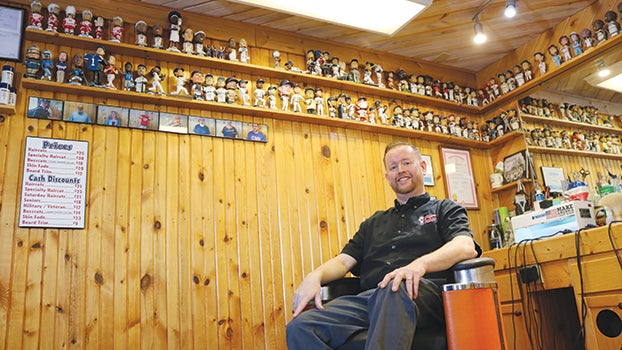Living with lupus
Published 11:20 am Thursday, February 26, 2015
Niles teacher overcomes life-altering disease
NILES — Being diagnosed with lupus used to be a death sentence.
Over the past decade or so, advancement in medicines and an understanding of the disease means that patients can live longer lives.
While the diagnosis means big changes for the individuals with lupus, dealing with the effects of the autoimmune disease that attacks various organs becomes the focus instead of preparing for the inevitable.
The Lupus Foundation of America estimates that 1.5 million Americans have the disease. And although lupus strikes both men and women, about 90 percent of those who are diagnosed with it are women, mainly between the ages of 15 and 44.
Such is the case for Niles Community Schools teacher Sally Irons.
Systemic lupus comprises approximately 70 percent of all cases. In almost half of those cases, the disease attacks a major organ such as the kidneys, lungs, heart or brain.
Irons was diagnosed in the fall of 1995. She was struggling with what she thought was a circulatory problem.
“My hands and feet were swelling up,” she said. “I had a real red complexion, what they call the Mylar rash (butterfly rash) on my face. So I went to my doctor and because of the hands and feet swelling, I said ‘I think I have a circulatory problem because my body is just not acting right.’”
That was in the spring of 1995. Over the course of the next couple of months she was given medicine to treat high blood pressure and went through several other types of treatments with no success.
Irons had finally had enough.
“I said, ‘this is not working,’” she said. “His answer was ‘I have nothing more to offer.’ So I said ‘fine’ and I gave up on it.”
A horrible chest cold in the fall of 1995 led to the proper diagnosis.
“I wound up over at Granger Family Medical Clinic on a Saturday,” she recalled. “I met Dr. Jesse Hsieh. So he treated me aggressively for the bronchitis and said, ‘I want to see you back in two weeks.’
“I went back for the follow-up and as I was leaving, I said, ‘Doc, what is with this red face?’ And he goes, ‘Lupus. Have you ever been tested?’”
The physician put in a request for the blood work and confirmed that Irons had lupus.
She was transferred to a rheumatologist, which she could not get into see until January of 1996.
“By now I am freaking out,” Irons said. “This was early, when the Internet was just coming alive and everything I am reading says there is a 10-year life expectancy and all kind of issues. So I go to the doctor’s office and ask them to give my some info on lupus.”
At first the rheumatologist’s office was reluctant to give her information until after she was seen. Despite her growing concerns, Irons waited until her appointment to find out exactly what was going to happen.
“So I finally get in there and I find out that I am very lucky because although I have two forms of lupus — discoid (which affects the skin) and systemic (which is the most common and considered the most dangerous) — mine affects the blood cells that destroy viruses and bacteria that gets into our system.
“Well my version of lupus attacks the antiphospholipid antibodies, which basically means it is the blood cells that help to prevent heart attacks and strokes. So what could happen to me, if my lupus flairs up bad enough, it could trigger a heart attack or a stroke.”
Irons has to be closely monitored and she visits the rheumatologist every six months so they can monitor her blood work.
So far, Irons has not had an issue with her systemic lupus. She is on a regimen of prescription drugs to keep the disease under control.
While Irons has not tried to make too many adjustments to her regular routine, there are times that she struggles with the disease because it makes her tired.
She also struggles with the perception of the disease, even among family members.
“When I first was diagnosed, my mother was like ‘Sally you have to slow down. You are sick, you need to slow down.’ My personality and my mentality has always been if I slow down I am going to give it a chance to bite me in the butt. So I keep going. I am very independent and I try not to ask for help even when I need it.”
Being a mother of four and a wife, Irons does not even slow down at home until the weekend when she tries to recharge herself and get ready for the following work week.
One of the keys to coping according to Irons is to find something that drives you.
“It is like with any disease, whether it is drug addiction, alcoholism, you have got to find something that gets you up and moving,” she said. “Whether it is a job, a volunteer program or a friend, you have got to say, ‘come on, let’s go, I am not taking no for an answer.’ Because that is what keeps you moving.
“My personality is such that I am driven to help others and that is what keeps me going.”







